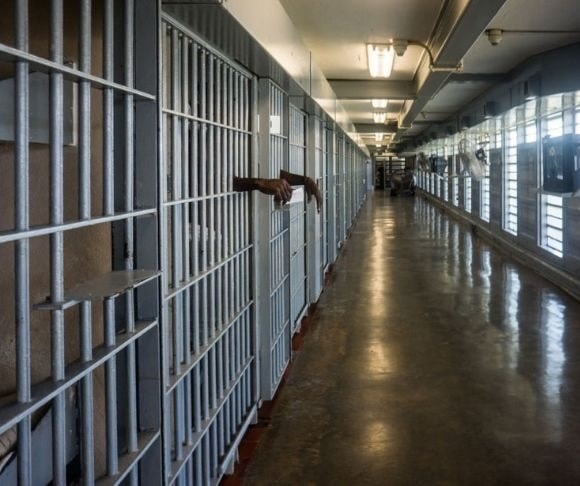California is closing another prison and plans to stop leasing privately owned facilities. State authorities announced last week that Chuckawalla Valley State Prison, located in Riverside County, will be shuttered and that they will stop using the facility in Kern County. Overcrowding, cost of operations, and reduction in crime were cited as reasons behind the closures. But where will all those inmates go, and is crime really going down in the Golden State?
Is Prison Reduction the Newest Trend?
 Overcrowding is a serious concern. In 2010, a federal court order mandated that prison populations be kept at or below 137.5% of its capacity. Currently, there are 33 prisons that hold 92,634 inmates, both male and female, which is 109% “of the total inmates the institutions were designed to house,” the Los Angeles Times reported. Chuckawalla, which is expected to be closed by 2025, was built to hold 1,738 people. It currently houses 2,037, according to statistics from California Department of Corrections and Rehabilitation (CDCR). Some of the buildings are in desperate need of updating and repair.
Overcrowding is a serious concern. In 2010, a federal court order mandated that prison populations be kept at or below 137.5% of its capacity. Currently, there are 33 prisons that hold 92,634 inmates, both male and female, which is 109% “of the total inmates the institutions were designed to house,” the Los Angeles Times reported. Chuckawalla, which is expected to be closed by 2025, was built to hold 1,738 people. It currently houses 2,037, according to statistics from California Department of Corrections and Rehabilitation (CDCR). Some of the buildings are in desperate need of updating and repair.
Jay Jordan, CEO of Alliance for Safety and Justice, said $14 billion is being spent a year to support these facilities, “prisons that were created in the ‘40s and ‘30s … literally throwing money over a crumbling infrastructure that does not do what it needs to do to keep us safe.” He added that private prisons are worse because “there should not be an incentive for profit to lock people up, it should be in the interest of public safety.” The CDCR announced it will be terminating its $32 million annual contract with CoreCivic for the privately owned California City Correctional Facility, expected to go into effect in March 2024.
Jordan told KQED that the problem started in the 1980s when the state “passed tough-on-crime, incarceration-first policies … that bloated the prison population.” To combat high capacity, inmates were shipped to other states. In 2010, around 10,400 California prisoners were being housed out of state, but in 2019, that policy ended.
Has Crime Really Gone Down in the Golden State?
“Crime’s going down, prison populations are down, but prison spending has steadily gone up,” Jordan said. But has crime really decreased? The Public Policy Institute of California’s numbers for 2021 suggest otherwise:
“California’s violent crime rate increased by 6.0% from 440 per 100,000 residents in 2020 to 466 in 2021. While robberies fell somewhat (by 1.9%), aggravated assaults jumped by 8.9%, and homicides and rape increased by 7.7% and 7.9%, respectively.”

(Photo by Giles Clarke/Getty Images)
Still, there are other factors. Over the past few years, the state has changed the law and how it is enforced. Shoplifting is no longer a punishable crime, for instance, unless the value of the theft reaches a certain dollar amount. California has also decriminalized marijuana use and possession and dropped some felonies to misdemeanors. This obviously will reduce the numbers in these areas and bring down prison populations. The state also has allowed early release of inmates and, during the pandemic, discharged many prisoners for health and safety reasons.
Skewing the numbers by decriminalizing and early release doesn’t really mean crime has gone down. It’s more like officials are looking the other way while congratulating themselves on a job well done. The CDCR is also planning to deactivate at least six other prisons, including the Folsom Women’s Facility. However, the department said, “Should a significant need for capacity arise in the future due to a natural disaster or other serious need, this option gives the State the possibility to re-activate these facilities at a later date.” For now, “Incarcerated people at these locations will be rehoused into appropriate level prisons.”




